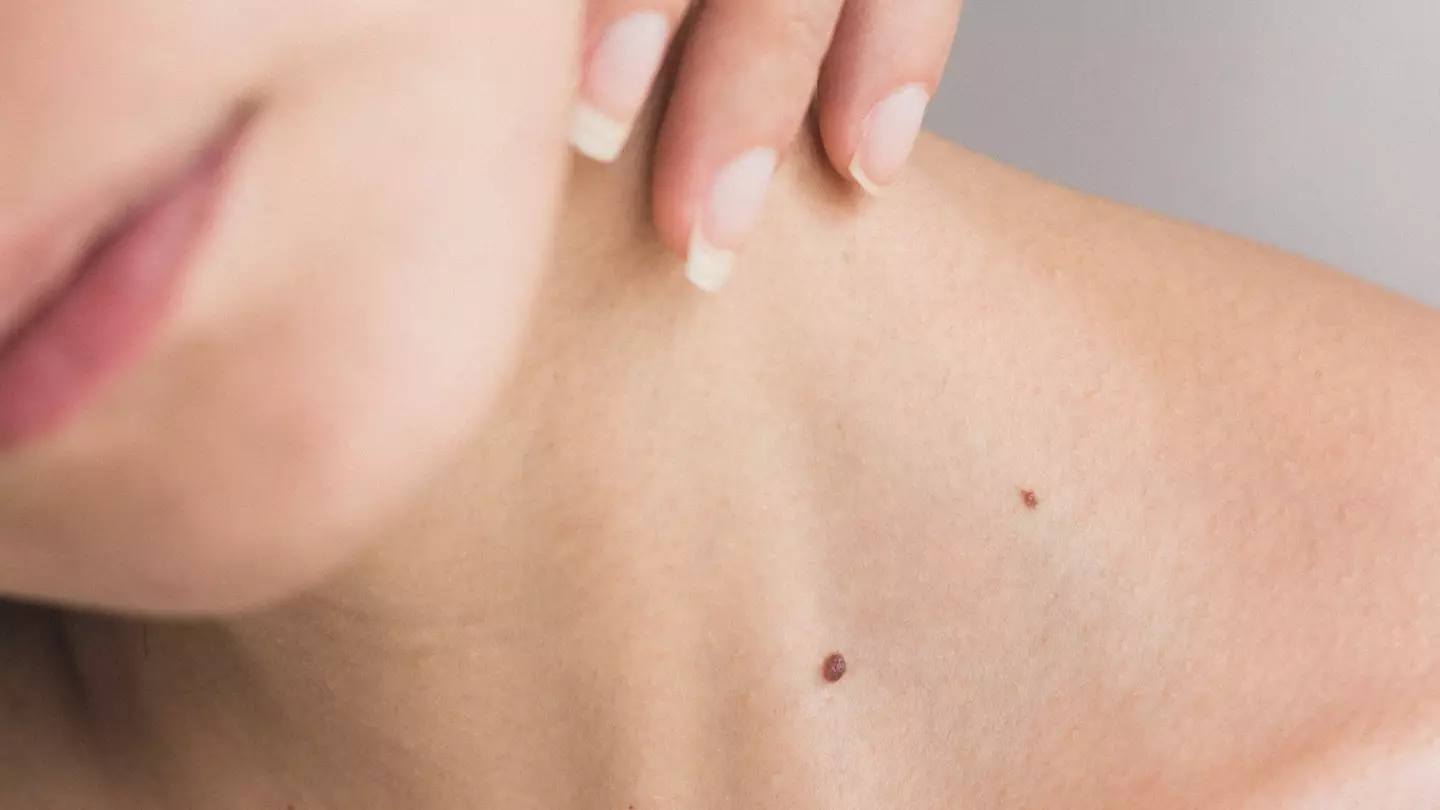
It’s super important to be familiar with our bodies. Getting to know our skin well means that we can be clued up when a change takes place, especially when that change could mean something deeper is going on.
This is even more vital considering that we’ve all been sunbathing in the recent heatwave. Sunlight is our main source of ultraviolet (UV) light and causes most skin cancer, damaging the DNA in our skin cells.

So, when we clock a change on our skin like a mole changing in appearance, how can we tell if it is cancerous and therefore needs urgent attention?
Advert
Specifically, melanoma – a type of skin cancer caused by too much sun exposure – can result in unusual, new or changing moles and spotting this early can save lives.

Which is why the UK’s leading skin cancer screening specialists, The MOLE Clinic®, have this handy ‘ABCDEFG’ rule.
It’s super useful, and you just need to know your alphabet!
Advert
So, if you see something of concern, ask yourself these questions:
A – Asymmetry: Is the mole asymmetrical in shape, where one half of the mole is unlike the other?
B – Border: Does the mole have an irregular border? Is it scalloped, jagged or poorly defined?

C – Colour and Comparison: Does the mole have more than one colour? Does the mole look different to your other moles?

D – Diameter: What is the diameter of the mole? Check to see if it’s bigger than 7mm (about the size of the end of a pencil). However, it’s important to note that most skin cancer starts off smaller than this and you must check for any lesion that is new, changing or unusual, regardless of size.
Advert
E – Evolving: Is the mole evolving or changing size shape or colour?

EFG – Elevated/Firm/Growing: Is the skin lesion all of elevated, firm to touch and growing in a sustained manner?
If you can answer “yes” to any of the above questions, it’s best to be safe and have the mole checked as early as possible by your GP or by a skin specialist such as The MOLE Clinic® so that it’s more likely to easily be treated.

The MOLE Clinic® has also arrived at sk:n, the UK’s leading skin clinic, with appointments now available in six locations (Edinburgh, Glasgow, Manchester, Liverpool, Brighton and Southampton), and more to follow.
Advert
For more information about melanoma skin cancer, please visit the NHS website.
Featured Image Credit: Unsplash/ Angélica Echeverry